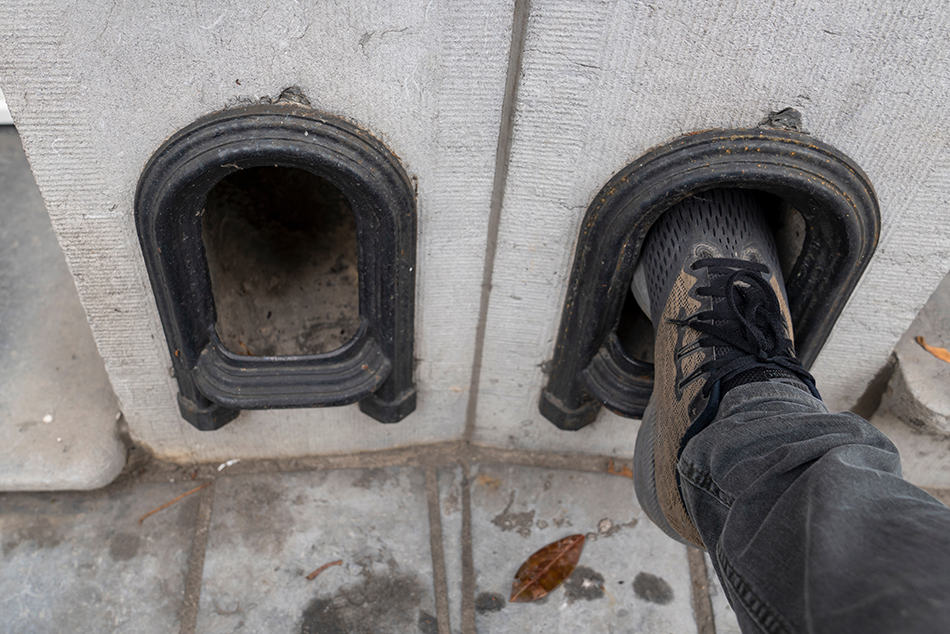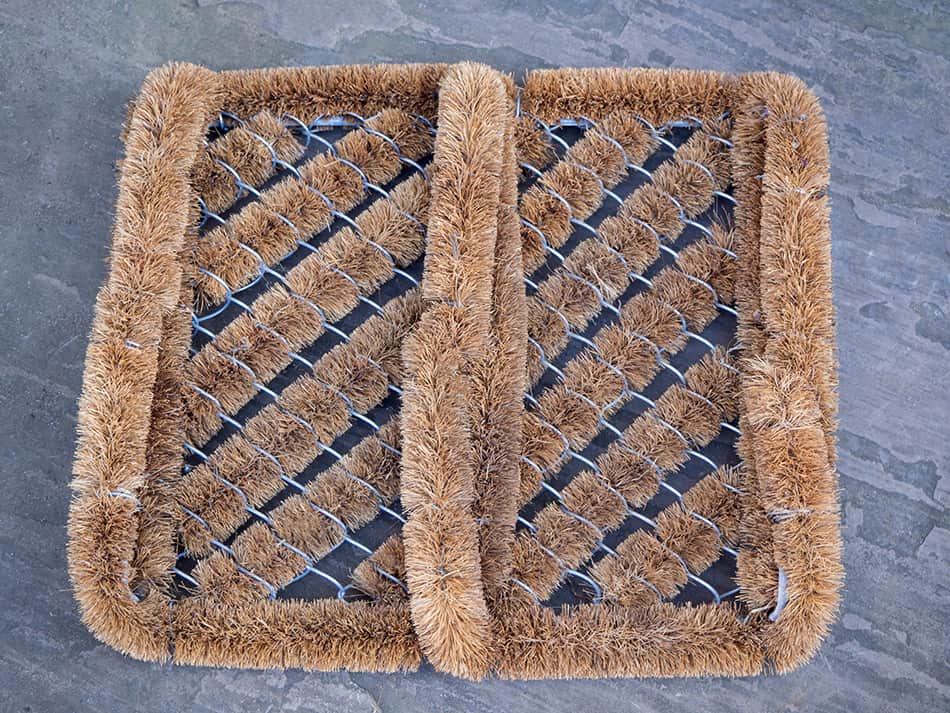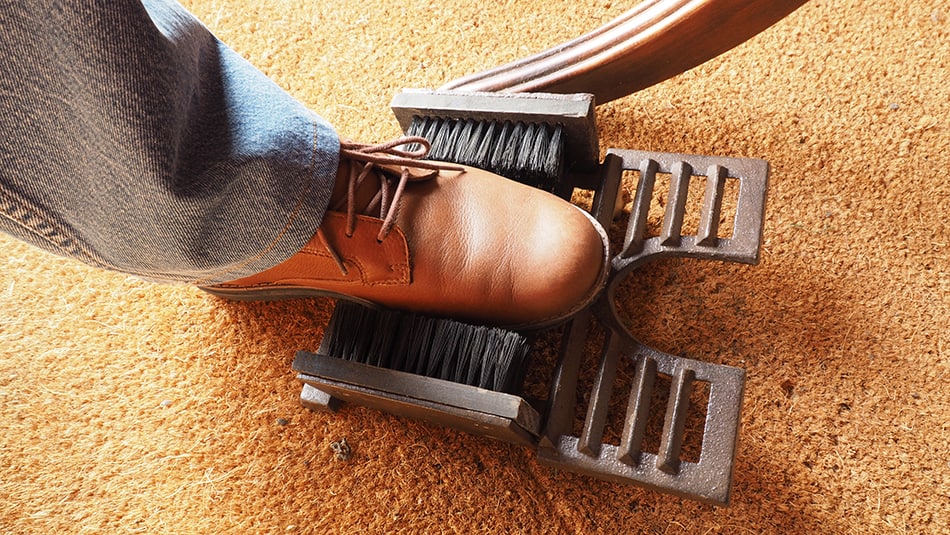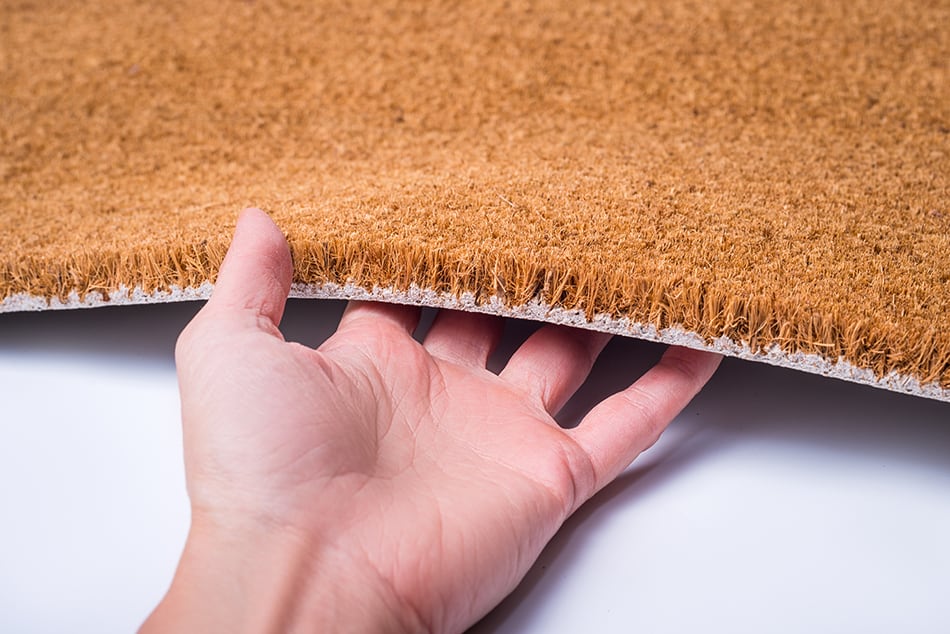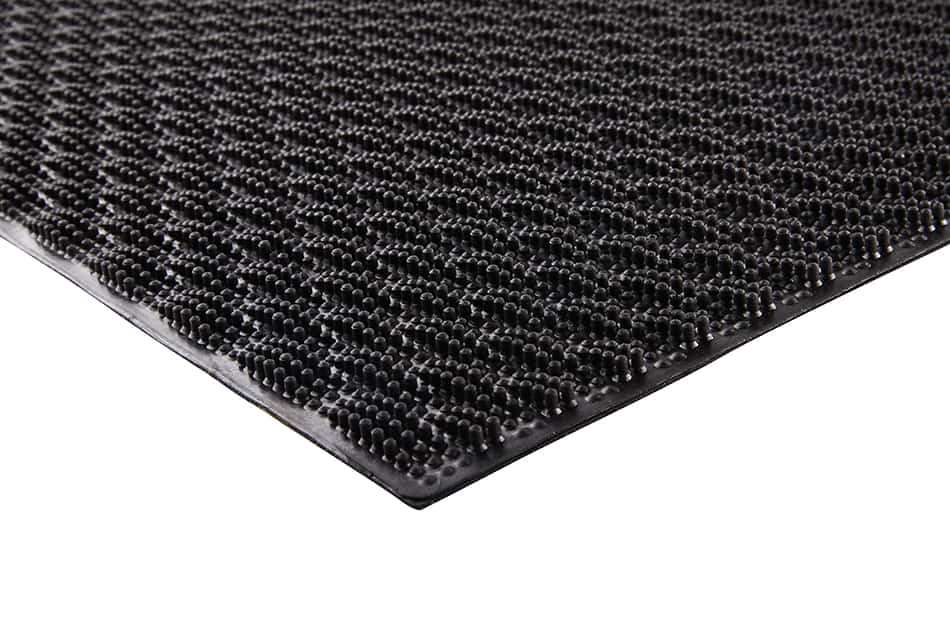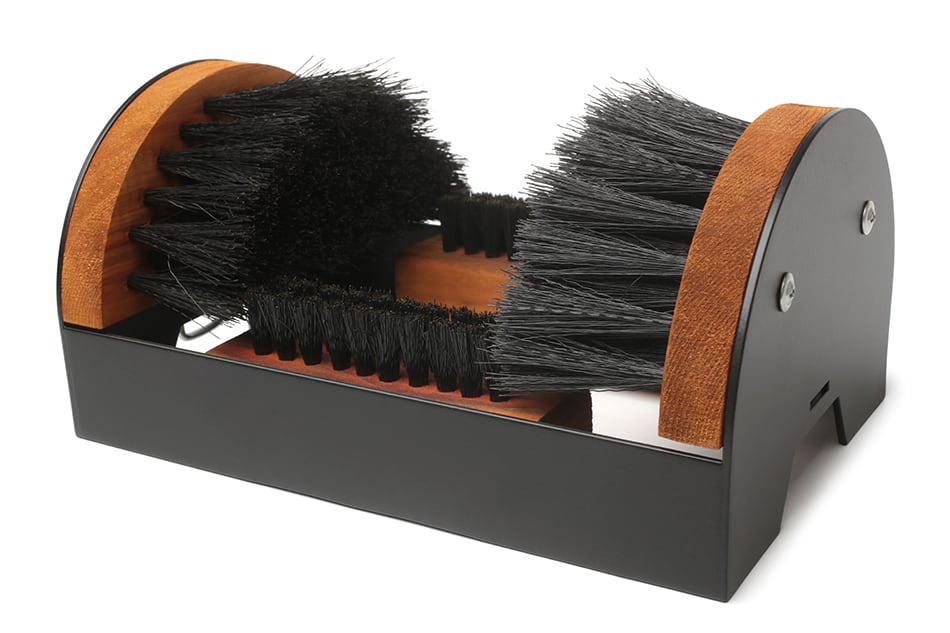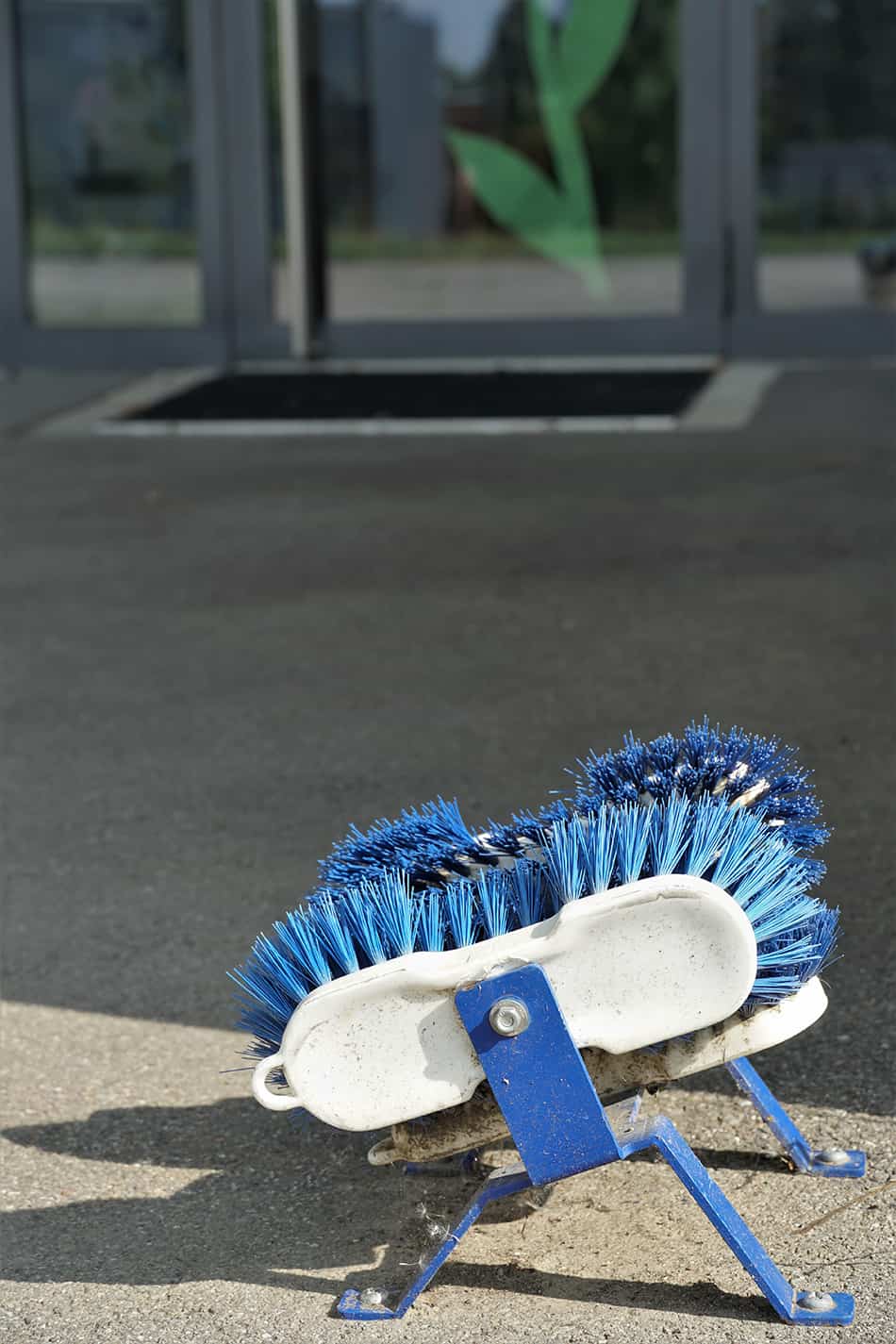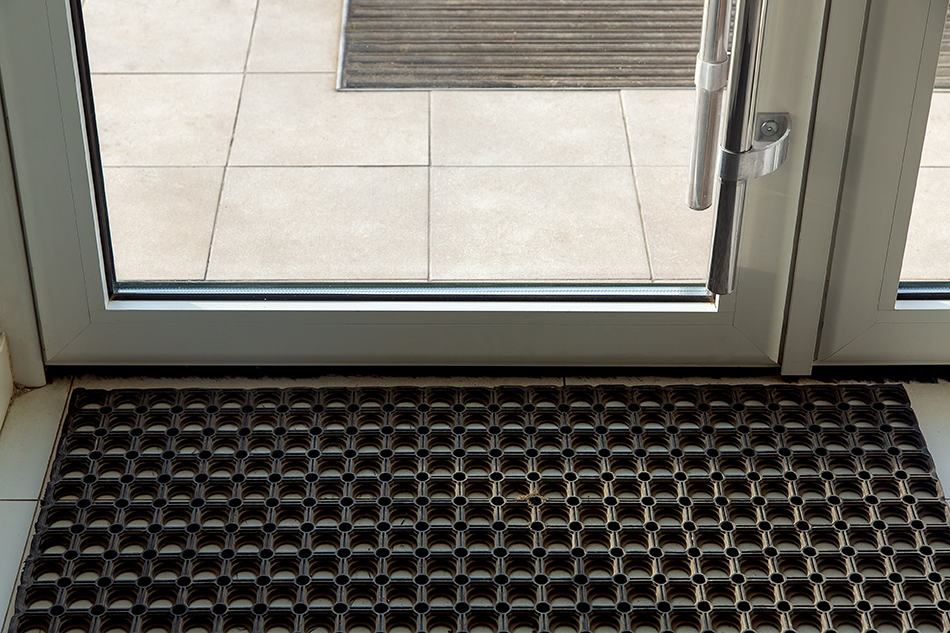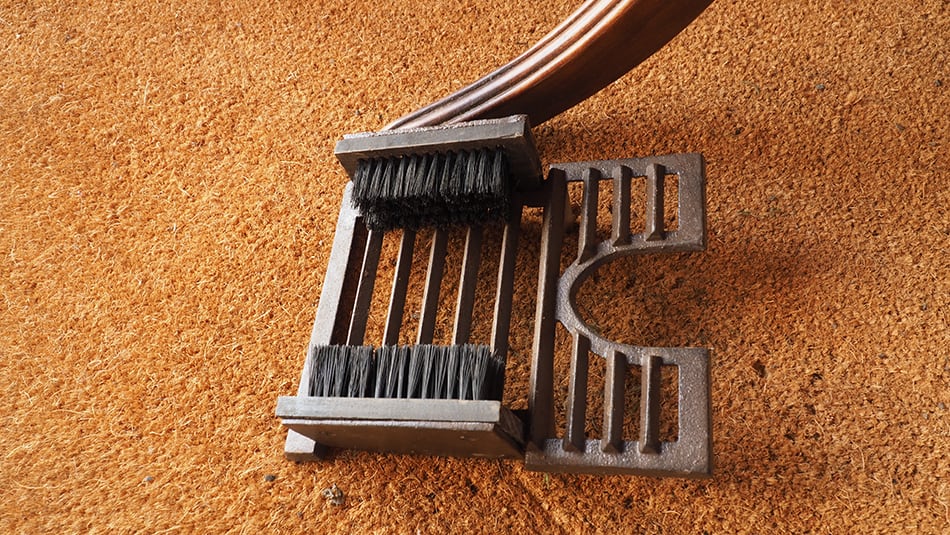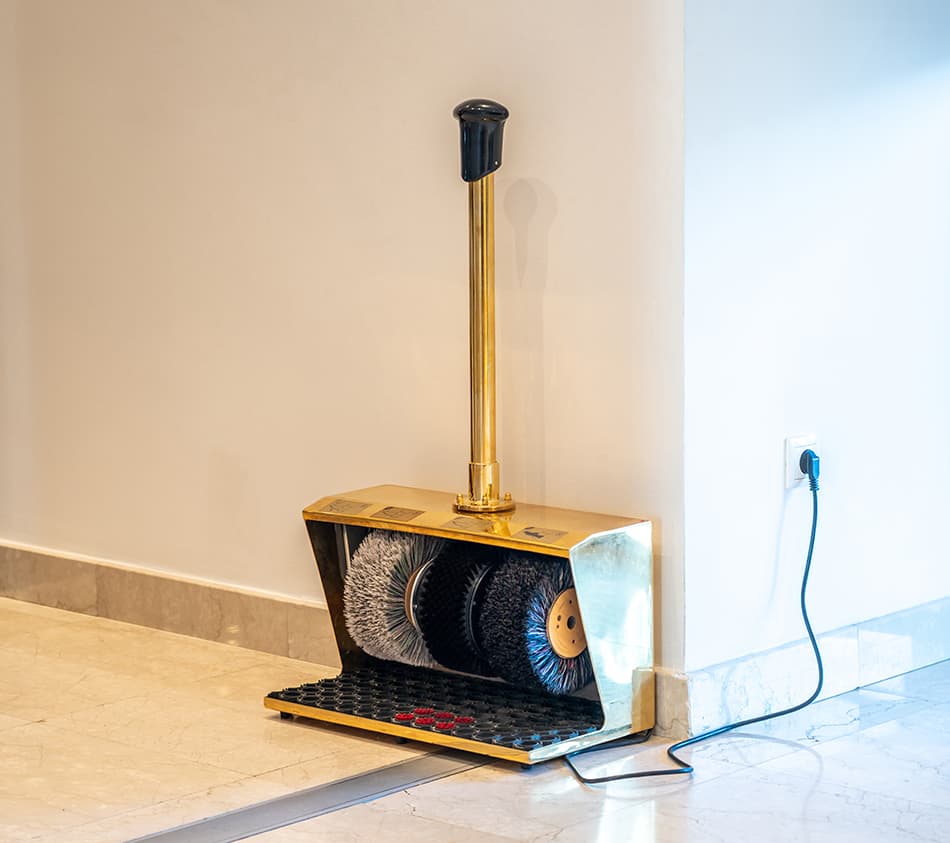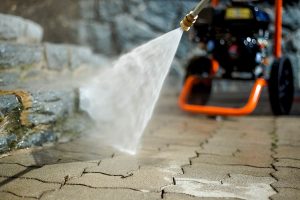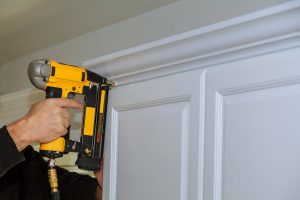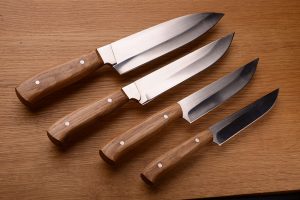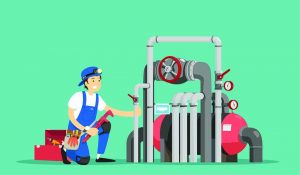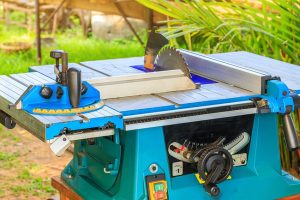A boot scraper is a handy item that you find in many households. In their simplest form, they are doormats. But there is actually a wide variety of boot scrapers in various materials that perform the job of cleaning your shoes.
So whether your objective is to shake off a bit of dust from your sneakers after walking the dog or removing solidified mud from your hiking boots, there’s a boot scraper for you.
Types of Boot Scrapers by Cleaning Action
Boot scrapers clean shoes mainly by rubbing your shoes against a mat, scrubber, or brush.
Mat
Mats come in different sizes and shapes, from flat doormats to more creative designs. While you’re more likely to place a cleaning device with brushes on the exterior of your home, mats can be put indoors and outdoors. Mats offer excellent cleaning for the soles of your shoes but don’t clean the sides or tops.
They’ll do a good job of removing soft and wet dirt, but they won’t quite manage to take off caked-on mud. A mat also only works well if you create enough friction with your feet to dislodge the debris.
Scrubbers and Brushes
If your boot scraper cleans using scrubbers and brushes, then you’ll know how durable these scrapers are. Both scrubbers and brushes have rows of tough bristles that can efficiently clean your boots. The difference is that scrubber bristles are shorter and great for cleaning the bottom of your shoes. In contrast, brushes have longer bristles and are often better for cleaning the top of the boot too.
If you’re concerned about your shoes becoming damaged during the cleaning process, a boot scraper that combines a scrubber and brush is a good choice. The scrubber is used to clean the sole, and the brush’s softer side bristles provide a gentle clean for the shoe’s upper leather section.
Boot Scraper Materials
Metal was the original material used when boot cleaners first became commonplace more than 300 years ago. But since then, other materials like sustainable coir and versatile rubber have become widely used and are more popular. However, metal is still loved for its vintage look.
Metal
In the 18th century, city streets were nothing more than packed soil, gravel, or cobblestones. They would become muddy on rainy days or trap dirt in between the cracks between the stones.
In a world before waste removal, street-level drains and household sanitation systems were the standard. It goes without saying that these roads were not a pleasure to walk on. Pedestrians weren’t always able to avoid garbage and other hazards.
It was around this time that metal boot scrapers became prominent features in European and American cities. Metal boot scrapers are usually made from cast or wrought iron.
They are positioned outside the entrance of a building or home. As a homeowner or their guest prepared to enter the property, it was a common courtesy to scrape their shoes on the metal to avoid tracking dirt inside. Debris that’s caked on or left on the metal scraper is simply swept away with a brush or broom.
Many historic buildings still have their original metal boot scrapers, which, in a modern world, have become a charming reminder of the past. However, metal scrapers also have a place in today’s contemporary homes. They are often placed outside a door leading in from a garden, where their hard edges effectively remove thick mud and soil from boots and shoes.
You can have your iron boot scrapers custom-made at a metal workshop. They often feature ornate designs or are paired with other materials like coir, rubber, or brushes to make them even more practical.
Coir
Coir is a tough material that’s also known as coir-peat, coco-peat, coir fiber pith, and other names. It’s a by-product of coconuts and is found on the husk’s inner shell. Various production processes are used to manufacture coir. Producers soak the coir in freshwater until the stringy fibers come off. In contrast, other manufacturers use mechanical means to separate the fibers from the husk.
Coir is a multipurpose material used in gardening, as upholstery stuffing, to make ropes and brushes, and more. You’re probably most familiar with it in the form of a doormat or rug, where its rough, scratchy texture makes it an ideal surface for scraping dirt off shoes.
Coir works particularly well as a boot scraper because of its resilience and durability. Its tough fibers are tightly wound into cylinders which are then inserted into a wire structure to make boot-scraping mats.
Due to its ribbed design and the pointy bristled fibers that stick out of it, a coir rug makes an excellent catch-all for mud, leaves, snow, and other debris to stick to.
In addition, coir is water-resistant, so placing one of these mats on your doorstep can also stop water from coming into your home when it rains. Finally, maintaining and cleaning a coir doormat is easy. You can use a vacuum cleaner on it or sweep it with a broom. Even just giving it a quick shake does the job.
Coir is a popular material because the fibers can be dyed and shaped into different designs, from classic rectangle and half-ovals to funny and quirky animal shapes. Homeowners love coir boot scrapers because they can enhance a home’s indoor or outdoor décor while offering functionality. Plus, since coir is eco-friendly and sustainable, it’s a guilt-free choice too.
Rubber
Rubber is another material that helps to keep the floors inside your house clean and dry. Typically, rubber is made into a mat and placed in a home’s entryway.
Oversized mats are also commonly used in commercial settings, such as at the entrance to company reception areas. In industrial environments, they’re not only crucial for keeping floors clean but also for reducing the likelihood of people falling, as cement or granite floors can become slippery when water pools on them.
Sometimes, rubber is used together with coir or brushes or is fitted with a tray where shoes can be left before someone comes into the house. Rubber mats are designed with tiny protrusions or ridges that are great at gripping dust, grass, and other dirt. In addition, they provide a thorough cleaning for the underside of your shoes and boots.
One of the best things about rubber matting is that it doesn’t slide around, so you won’t find yourself constantly putting it back in place. When it’s time to clean the mat, hose it down or shake it off, and it’s ready for use again. Rubber mats aren’t all about function, though. They can be cut or molded into beautiful designs and shapes, so they can also be an attractive door feature.
Types of Boot Scrapers By Function
Boot scrapers can be used in homes, businesses, and other public spaces. Residential boot scrubbers are typically smaller than those in industrial settings. On the other hand, boot scrapers in public or business facilities often provide more comprehensive cleaning to meet strict hygiene requirements.
Single Boot Scraper
Single boot cleaners are compact and convenient if you have limited space on your porch but still want the benefit of having the scraper at your entrance. The boot scraper can be mounted or free-standing, and some models are so small that they can easily be moved from one place to another.
A popular single boot scraper style is one made from durable steel and wood. It’s equipped with two brushes on either side that envelope the shoe to clean the top and sides, while another brush on the bottom cleans the sole. Next to the brushes, there are flat plates or trays that are each used as a footrest for one shoe while the other is cleaned. To use a single boot scraper, rub your foot between the brushes, and they will do all the work of cleaning off the dirt.
A traditional metal scraper featuring a flat metal bar suspended between two columns will do if you have the bare minimum space next to your door. Then, simply pass each foot over the scraper for a quick clean.
Single boot scrapers have many advantages; however, bear in mind that you’ll have to rest the freshly cleaned shoe back on the ground as the other one gets scrubbed. So there’s a risk of picking up some dirt again.
Double Boot Scraper
Double boot scrapers have space for you to place both feet on the unit. Naturally, they take up more space than single boot scrapers, so they are suitable if you have a spacious porch inside the entrance hall of your house.
The main advantage of a double boot scraper is that cleaning your shoes takes less time because both of them get scrubbed simultaneously.
Scrubbers, rubber mats, and coir rugs work well as double boot cleaners because the motion of shuffling your feet against a surface to clean them is intuitive. However, you may miss having brushes because dual boot scrapers are not as effective at cleaning the tops and sides of the shoes.
Permanently Mounted Boot Scrapers
If you use a boot scraper frequently, you might find it more convenient to install it permanently on your entrance. Metal boot scrapers are ideal for mounting outdoors because the metal is weather-resistant.
Depending on how they are made, you may be able to mount other boot-scraping devices outside. Still, you’ll want to make sure they have a durable steel casing so they last longer.
Movable Boot Scrapers
Boot scrapers that you can move around are suited for outdoor and indoor use. A hybrid coir and rubber mat, for instance, is easy to pick up and move to another location where it is needed.
Movable boot scrapers are a good option if you don’t want them to be a permanent fixture on your home’s exterior. And they’re great if you prefer to change your boot scraper to correspond with your home décor or according to seasonal changes.
A basic rubber mat, for instance, might do the job of getting grass and dust off your shoes in summer. But during the snowy winter, you might prefer to replace it with a more robust solution, like a double boot scraper with brushes, that does a better job of cleaning your boots.
Angled Brush Boot Cleaner
Boot scrubbers with angled brushes offer superior dirt removal. This is the reason why you’ll find them used on farms, ranches, and other commercial settings where a lot of filthy and muddy boots need to be cleaned.
As the name implies, this style of boot scraper features two long rectangular brushes set at upward-facing angles. The brushes are stiff and densely packed bristles supported by a metal frame, giving the unit a solid and sturdy base.
An angled brush boot scraper can quickly and thoroughly clean one boot at a time as you brush it against the bristles. If you find that there’s still some dirt under your shoes, you can scrape it off using the metal scraper situated under the brushes and built into some models.
2-Point Boot Cleaners
Another popular heavy-duty boot scrubber is the 2-point cleaner. These boot cleaners also have angled brushes with rough bristles. However, the unit has two cleaning stations positioned on either side of a long vertical handle. This allows two people to use the boot cleaner simultaneously while holding onto the handle for balance.
This boot scrubber is convenient when many people need to clean their shoes and avoid queues forming. For example, this would be the case in shared facilities, such as horse stables or community allotment gardens.
Automatic Boot Scrubbers
Boot cleaning machines scrub boots using a combination of brushing and a liquid detergent. You’ll usually find this type of boot scrubber at the entrance of facilities where very high hygiene standards need to be maintained, for example, in food production and packaging factories. Automatic boot scrubbers require no effort on the part of the user.
Simply step on it to activate the cleaning action, which is usually timed to ensure that debris is completely removed and that the boots or shoes are thoroughly disinfected.
